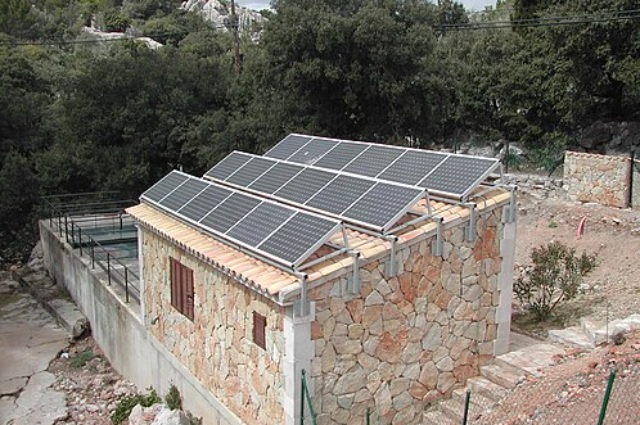
The construction industry has been a two-edged sword for a long time. While increasing economic growth, it also contributes around 40% global CO2 emissions, roughly due to energy-intensive materials such as cement and steel. In response, a new wave of startups with green construction proves that stability can not only be environmentally responsible but also profitable. By developing environmentally friendly building materials, these NEO-led companies are making one of the world's most traditional industries a test site for permanent trading models.
Reporting Technical Solution: Construction materials left.
The center of this round has physical innovations designed to cut emissions, improve energy efficiency, and reduce waste without compromising on durability.
1. Options with low-carbon: Cement is about 8% responsible for global emissions. Start-up as carbon cure injections occupy CO in concrete during production, where it further strengthens the material. It not only reduces carbon footprint, but also produces concrete that is stronger than traditional mixtures.
2. Biomaterials (Hempcrete and Mycelium brick): The Temperate (made of cannabis obstruction, lime, and water) is light, insulating, and absorbs carbon when cured. Mycelium-based brick grown from fungal roots is biodegradable, fire-proof, and requires much less energy than soil or cement masonry.
3. Recycling and circular materials: The recycled steel, retrieved wood, and glass sets are rebuilt to reduce the waste. Companies lead the closed-loop system, where the materials from the cracked buildings are returned to the new construction.
4. Cross-laminated timber (CLT): Engineered wood products such as CLT receive traction as permanent alternatives for concrete and steel in mid-use production. CLT stores carbon and provides light but strong structural properties.
5. 3D printing with eco-features: Start-up is combined for the construction of walls and housing units with low physical waste, with low-carbon concrete or recycled plastic composites. This innovation reduces both labor costs and environmental effects. Together, these solutions form a toolbox for the production industry - and provide a way of reducing carbon addiction without giving up structural integrity or profitability.
Business approach: Who leads the green building revolution?
Many start-ups lead environmentally friendly material solutions, while positioning themselves as profitable businesses. Carbon cure (Canada)- Carbon cure is recycled in concrete production and reduces the need for raw materials, and stores it permanently. Supported by large investors, these are used in thousands of construction projects worldwide, showing how stability can be in line with scalability. Biome son (U.S.)- Inspired by natural processes, biome son "brick grows using microorganisms, such as cement sand grains at the same time. The result is an alternative with low carbon for traditional bricks that eliminates the requirements for stoves with high temperatures. Hempetecture (U.S.)- Specialization in Ganja-based insulation and structural blocks, the Hempetecture market itself is not only environmentally friendly, but also a solution for a healthy indoor environment, because humidity controls the moisture and counteracts the Mold. Nexii (Canada)- Nexii has developed Nexiite, a durable material that reduces carbon emissions by about 30% in concrete. The prepared panels also accelerated the construction deadline, which made the developers focus on both costs and stability. Woho (U.S.)- A modular start-up of production using cross-grating wood for prefabricated homes. By combining modular efficiency with renewable materials, Woho shows how eco-content can occur in urban housing. These companies prove that green construction is not a niche - this is a growing market opportunity.
Impact on the construction industry
The emergence of environmentally friendly start-ups is not just about innovation; It has transformed the entire construction industry:
1. Material supply chains: Traditional steel and cement suppliers compete with bio-based and recycled alternatives, pushing the industry towards green purchases.
2. Cost Competition: While early eco components were more expensive, scaling production has reduced costs. Start-up such as Carbon Cure and Nexii now shows that stability can be cost-optimized or even cheaper, considering life cycle savings.
3. New standard and certificate: Developers demanded environmental materials for fast-green building standards, and influenced the investor's decision with LEED, BREAM, and WELL certificates. It holds startups at the center of match-driven development.
4. Market expansion through politics: Government incentives and carbon rules increase demand. For example, the EU's green agreement and the US inflation reduction law include provisions that reward production practices with low carbon emissions.
5. Construction as innovation: Using green content has replaced the construction industry in the form of a technical age, and attracts new talent, partnerships, and business capital.
Carbon Cure in Commercial Construction.
A practical example can be seen in Amazon's HQ2 project in Virginia, where carbon concrete was widely used. By inserting CO into a concrete mixture, Amazon not only reduced emissions but also adjusted the project with its net carbon lift. The case shows how the large companies are drawing green start-ups into the mainstream supply chain, causing a wave effect in the commercial production industry.
Big adoption challenges.
Despite the speed, green constructions face barriers: Production objectives: Production capacity requires rapid scaling to compete with global cement and steel giants. Marketing education: Developers can hesitate to use unknown content without long-term performance data. Regulatory barriers: Building codes in many areas have not yet been updated to identify bio-based or alternative materials. Cost pressure: While savings of the life cycle exist, pre-costs can prevent adoption in cost-sensitive markets. These challenges emphasize why collaboration between start-ups, regulators, and traditional players is necessary.
Conclusion
Startups with green structures show that environmentally friendly material is not only moral but also favourable. By taking advantage of innovations in low-Carbon, biometric, recycled products, and advanced wood, these companies write about the rules for one of the world's most resource-intensive industries. As companies such as Carbon Cure, Biome Son, and Hempitecture show, the construction industry can flourish by shrinking its environmental footprint. For developers, contractors, and investors, the message is clear: The future of construction is green, and the benefits are real.
